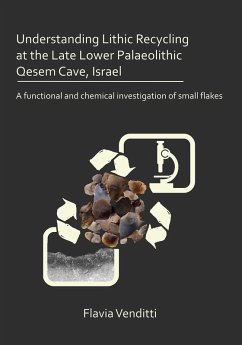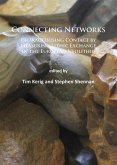Flakes, and small flakes in particular, are usually seen as by-products or debris of the knapping process, rather than as desired end-products with a specific potential use. In recent years, this particular category of small tools has attracted increasing interest among researchers, especially when focusing on technological aspects in Lower Palaeolithic contexts, while the functional role of these tools is still poorly investigated. 'Understanding Lithic Recycling at the Late Lower Palaeolithic Qesem Cave, Israel: A functional and chemical investigation of small flakes' examines Late Lower Palaeolithic Qesem Cave, Israel, where a particular lithic trajectory directed towards the production of small flakes by means of recycling and exploiting old discarded flakes as cores has been recognised. The high density of this production throughout the stratigraphic sequence of the cave demonstrates that this was a conscious and planned technological choice aimed at providing small and sharp items to meet specific functional behaviours, and that this lithic behaviour persisted for some 200 kyr of human use of the cave. The exceptional conservation of use-wear signs and residues has made it possible to reconstruct the functional role of this specific production system, highlighting its specialised nature mostly related to the processing of the animal carcasses through accurate and careful actions and in a very specific way. The application of functional analysis based on the determination of wear on artefacts by means of optical light microscope, scanning electron microscopy and chemical analysis (FTIR and EDX), provides a useful and effective approach for understanding the adaptive strategies of the Qesem Cave hominins while facing various situations and solving different needs.
Dieser Download kann aus rechtlichen Gründen nur mit Rechnungsadresse in A, B, BG, CY, CZ, D, DK, EW, E, FIN, F, GR, HR, H, IRL, I, LT, L, LR, M, NL, PL, P, R, S, SLO, SK ausgeliefert werden.









